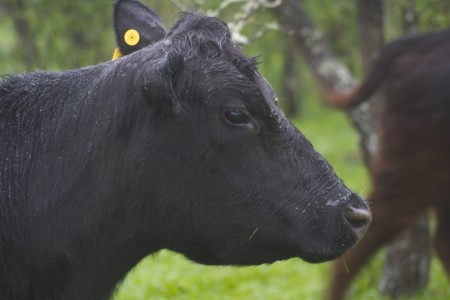
by Food+City | Apr 10, 2012 | Food Tracks Blog, Stories
Mary-Rose and Lefty Fisher’s farm, Rancho benedicion de Dios (translated Blessing of God Ranch), was awash in a much-needed rainstorm last week. Texan’s don’t mind the inconvenience of flooded streets when rain brings a break in the Texas drought. And on the day that I visited Mary-Rose in March, her pastures were green and the Black Angus cattle stood out, rivulets of water trickling down their big steamy bodies. As bovines are wont to do, they were ruminating after pulling at the green grass that would soon rebound after these spring rains.
But their black cattle were also looking afield, searching for their newborn calves, a common addition to their herd during March. Already this year they have five new calves, each cossetted behind thistles and other low-growing shrubs. The ranch raises about 20 cattle, all Black Angus. But these newborns represent a new initiative on the ranch. This year, the Fishers leased a Wagyu bull, a cattle breed, literally “Japanese cattle,” that has been associated with the Kobe region of Japan. Up to 25% of a Wagyu steak is unsaturated fat, marbled throughout the meat. The meat is extremely tender, flavorful, and possibly the “foie gras” of the beef world. By crossing the Wagyu bull with their Black Angus cattle, Mary-Rose and Lefty hope to produce an even more flavorful, tender meat product in the next few years.
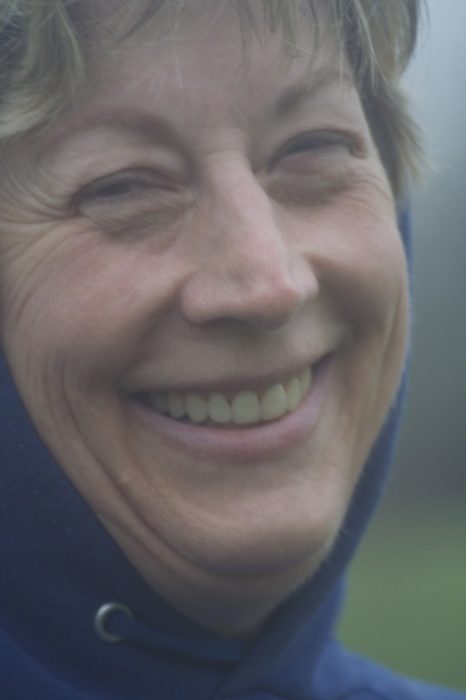
Experimentation is nothing new for these ranchers who just started raising cattle in 2003. When the Fishers purchased their ranch, they had to reclaim the soil in preparation for organic certification. Today they produce organically raised grass finished cattle. Their Wagyu-Angus project along with their organic practices, make their ranch a small and carefully managed enterprise. Their customers, individuals and a local resort scoop up their beef products, evidence that they’re on to a good thing. Both Mary-Rose and her husband are reassuring evidence that new ranchers don’t require a long pedigree to enter these niche markets. Both are not native Texans and have come from other careers. By reaching out to other ranchers, reading, and observing how ranches operate, they have been able to begin a small and innovative beef ranch. The Rancho benedicion de Dios, may just be the model for a new breed of farmers that wants to innovate, stay small, while selling to a market that is willing to be patient, pay higher prices, and appreciate locally raised, organic meat, called by Fishers, “Holy Organic Beef™”
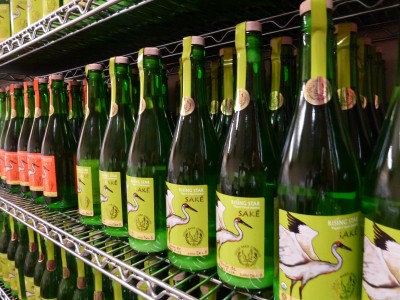
by Food+City | Apr 4, 2012 | Food Tracks Blog, Stories
Yoed Anis makes sake in Texas. Born in Israel, but a self-proclaimed Texan, Yoed began his enterprise, Texas Sake Company, in the fall of 2011, propelled by his love of brewing beer and an attraction to a natural connection between the historical tradition of rice growing in Texas and the potential of brewing sake. Immigrants such as Yoed and Texas rice, the medium-grain variety used to make sake, both have long histories in Texas foodways.
From the late 19th century, Texas has been growing rice, a crop increasingly threatened by the recent Texas drought. During the 1880s and ‘90s, several entrepreneurs and companies saw an opportunity to develop rice farming in Texas and Louisiana, where water was plentiful and land was cheap. A group of Texas entrepreneurs met in 1879 in Houston to build a railroad from New Orleans to Houston, connecting Louisiana, known for growing rice, with Texas. This extension of the transportation infrastructure brought immigrants from the Midwest and encouraged innovation. The railroad company promoted cheap land prices and better agricultural conditions for Midwestern wheat farmers who were suffering from a succession of crop failures and a drought. Encouraged by the railroad promoters, the farmers brought their knowledge of wheat crops to Louisiana where they bought land and learned how to grow rice from the Cajun community. Soon, the John Deere tractor company developed new equipment for rice farmers and the scientists at Texas A & M developed a new variety of rice, one that would not crack under the pressure created by new milling machines. The variety was a cross between long grain Cajun rice and a medium-grain Kyushu rice, a Japanese rice introduced by the Japanese who were hoping to find more land in Texas to expand its own rice growing capacity. The result was a medium-grained rice suited to the emerging rice industry in Southeastern Texas.
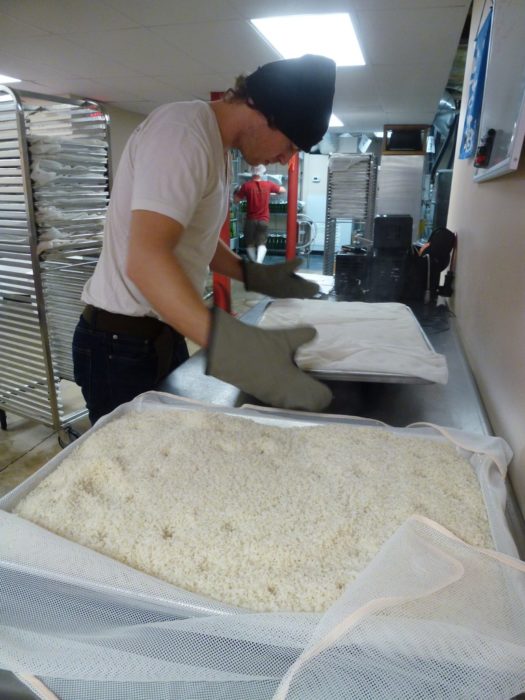
Soon the U.S. government joined these entrepreneurs and companies to support the growth of mills by adjusting freight rates to encourage entrepreneurs to build new rice mills. By the end of the 1890s, Texans joined the Louisiana rice farmers, led by entrepreneur Joe Broussard, who converted a grist mill and brought the tractors, canals, and rice to Beaumont, establishing a long tradition of rice growing in Southeast Texas, near ports where rice shipments could travel to other U.S. cities. By 1902, almost all the rice grown in the U.S. came from Texas and Louisiana.
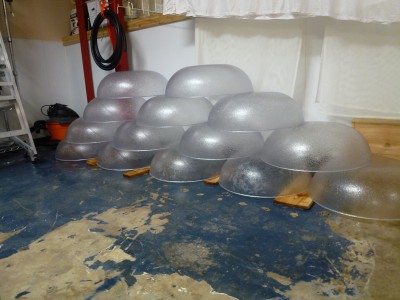
This makes Yoed part of a very long tradition that originated in the 19th century. He is adding his own innovation by introducing sake brewing into a thriving micro-beer brewing culture in Texas, particularly in Austin where microbreweries abound. Reaching out to what remains of the tenacious rice growing community, Yoed buys organic, medium-grain rice from two Texas farmers and brews sake in a small warehouse in North Austin. Texas Sake Company produces two varieties, Whooping Crane (a clear, clean tasting sake), and Rising Star (a Nigori sake, sweet, country-style). Yoed and his brewers hand wash the rice before beginning a long cold fermentation process that uses sake bacteria. The company only produces 500 hundred bottles at a time, each bottle portraying the Texas whooping crane, an inhabitant of the Colorado River, a source of water for Texas rice farmers. One can only hope that entrepreneurs such as Yoed might find ways to continue growing rice in Texas, even under drought conditions. New technologies might emerge that could adapt rice to dry climates. And innovative ways to use rice, such as sake brewing, might encourage at least some of the remaining rice growers in Southeastern Texas. According to Yoed, sake is a perfect compliment to Texas BBQ. He is not only leading a sake revival in Texas, but by making a connection between Texas rice farmers, sake and BBQ, he might find a way to the hearts and bars of appreciative Austinians.
by Food+City | Apr 2, 2012 | Food Tracks Blog, Stories
A few weeks ago, my family challenged me to become a vegan for a week. For an enthusiastic omnivore, a week of what I viewed as deprivation was indeed challenging. As the days passed, I moved from curiosity to resentment to anger and then finally, acceptance. Two unexpected epiphanies came out of this experience. The first was that veganism can feel single-dimensional, like listening to an a cappella group instead of a symphony orchestra. Without meat, or at least dairy products, vegan diets feel thin, their ingredients lacking the tonal capacity to play off of one another, relying on solo performances for a discriminating audience. The second surprise was that with a little imagination, life without animal products is tenable and can consist of flavorful, tasty meals. Maybe even healthier.
With this week behind me, I explored a local vegan bakery, The Happy Vegan Baker. Veganism appeared first in Britain as an offshoot of The Vegetarian Society founded in 1847. Some Britons found the non-carnivorous life still too promiscuous. Almost fifty years later, British social reformers, motivated by both evangelicalism and the Quakers, demanded more protection for children who were factory workers and animals. In the 1890s, Henry Salt founded The Humanitarian League to improve the welfare of humans and non-humans. Almost a hundred years later, a more radical group emerged (1944) that rejected the idea of eating any animal products at all, including those that did not require killing an animal, like butter and cheese. In some ways, the rise of veganism after WWI parallels the recent lurch to localism, the intention to eat locally grown food. Both movements, if considered a form of dietary activism, entail rejecting one practice for another and the drawing of boundaries between one “purer” morality than another.
These vegetarians and vegans were hardly the bohemian left of society. Many were conservatives, whose bold rejection of British meat-eating identity signaled a modern sensitivity and rejection of animal cruelty. Some vegetarians in the early 20th century saw the consumption of dairy and eggs as only a temporary expedient on the way to total rejection of animal products. It is no wonder that these were the first to form the first vegan group in Britain in the 1940s.
People draw these boundaries for both ethical and health reasons and emerge during good economic times when people have more disposable time and money to consider choices previously unavailable. Combined with a fashionable interest in Eastern philosophies, new economic freedom led to more discretionary diets, and more boundaries between eating communities. A recent article by Jessica Greenebaum in Food, Culture & Society argues that vegans engage in a process that is constantly negotiated and situational as they seek to become more authentic within their community.
Vegans are thriving in Austin’s community. Most restaurants and food trucks offer vegetarian options and more and more include a vegan dish. A website called VeganAustin.org is the home of a group called Vegans Rock Austin. The group bestows the rating of “Vegan Best of Austin” to local restaurants while it sponsors an annual event, the Texas VegFest where you can meditate, participate in a bodybuilding event, or watch cooks demonstrate how to make tasty vegan dishes. A combination of health and spiritual wellness infuse the vegan groups in Austin and one such enlightened vegan is Inge Jorgenson.
This is no happier vegan cook than Inge at the Happy Vegan Baker. The beaming baker is a graduate of Cordon Bleu and a lifelong vegan. She came to Austin from Cape Town, South Africa in 2009, began to work at Hudson’s On the Bend, the University of Texas at Austin and Lakeway Spa Resort until her baking business began to take off. Now, she combines her bakery business with her work as a dietitian at Seton Family of Hospitals, a fitting occupation for someone who is finicky about food.
Inge was always careful about what she ate, according to her parents, Charlotte and Andre. While not proselytizing veganism, Inge feels that vegan diets are generally more healthy than other diets. Her parents recently joined her in Austin to work together in the bakery. Charlotte, a former special education teacher, and Andre, who formerly worked in the armaments and cellular telephone industries, both bring a home-cooked feel to the bakery menu and management skills for the business side of the business. Now there are three smiling vegans in the kitchen, an auspicious combination for a company that is expanding its business and growing its capabilities. And far from separating vegans from omnivores, Inge is doing her best to embrace all food lovers by baking pastries and concocting new recipes that appeal to the palates of anyone who appreciates tasteful, fresh, and imaginative food.
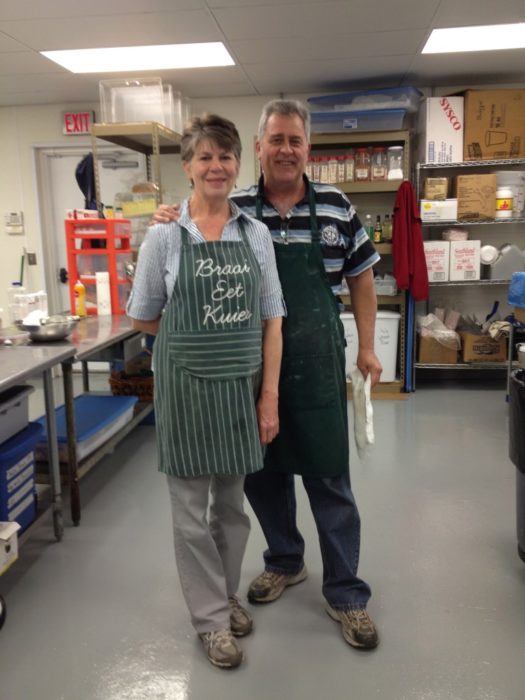
The Happy Vegan Baker is a family affair and their affection for each other is evident. Their kitchen, or commissary, as Inge calls it, is hidden behind other small confectionary enterprises in a unremarkable office park, absent a sign or directions to the bustling bakery. But inside its brightly lit space, mixers are humming and smells of pureed fruit fillings and dark chocolate cake batter fill the atmosphere. The bakery produces small fruit-filled tartlets, cakes, pies, cupcakes and is now venturing into more savory affairs, like breakfast tacos. Surprising to some of us non-vegans, is that these confections taste good. While missing the usual eggs and butter omnipresent in traditional pastry, Inge’s creations use vegetable shortening and innovative combinations of ingredients to produce tastes and textures that are satisfying and perfectly acceptable, even to us non-vegans. Billowy clouds of icing hover atop dainty cupcakes that fill Inge’s stall at the local farmer’s markets. Her business began in 2007 when she first got her space at one of Austin’s farmers markets. From there, she and now her family have expanded to other markets. One day they hope to open their own small café with a warm, home-like feeling, an aspiration that seems well within reach of Inge and her this dedicated family. A long cry from the seriousness of the original vegan movement in Britain, Inge’s happy countenance is reason enough to partake of her pastries. And her apple tarts, which I recently enjoyed, contributed to the revised view I now hold about vegan diets. Political and social implications aside, veganism plays an important part in our culinary landscape and offers choices and opportunities for innovation. Inge is one of those innovators who seems to be re-inventing vegan cuisine in ways that are appealing to even the avid omnivore.
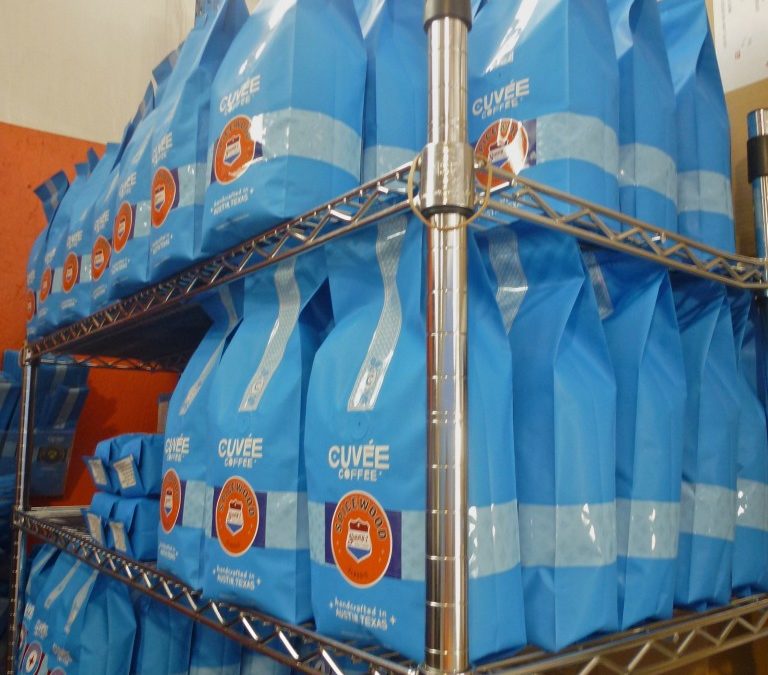
by Food+City | Feb 27, 2012 | Food Tracks Blog, Stories
To encounter Clancy Rose, Cuvee’s coffee roaster, aside one of his burnished Samiac machine is like meeting the owner of a Ferrari or Maserati. Words like “first crack” and “carmelization” tumble into the room, creating a continuous riff of geeky adjectives familiar to aficionados of high tech and high design. Clancy is one of five employees at a small Austin roaster, one that telegraphs technology in so many ways, not to mention in Clancy’s language and style. He relies on the shiny stainless steel digital controllers athwart each roaster that tweak and time the machines, enabling Cuvee to roast the best beans consistently, predictably, and according to specifications developed since its founding in 1998.
Cuvee’s name comes from the term reserved for wine, a description for the highest quality grapes used the production of sparkling wine or champagne. The founders like to think of their business as similar to the wine business, seeking beans like reserves of grapes, roasting instead of fermenting, speaking in terms familiar to wine sommeliers when describing their beans to customers. The company spends a lot of time with its farmers in order to develop beans and roasts in much the same way as wine makers work with soils, climates, and grape varieties. Beans are an obsession to these coffee geeks.
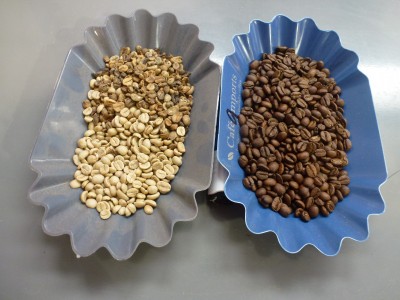
Founders Rashelle and Mike McKim were early pioneers of the direct trade movement, a role that led them to work directly with farming communities in the countries where they purchase coffee beans. And the company’s affinity for technology began long before the founding of Cuvee. Mike’s uncle, Carl Staub is a food scientist who invented a technology for measuring the degree of roast. A machine called a spectrophotometer from Carl’s company, Agtron, supplies Clancy’s competitive edge, allowing him to nudge the beans towards a roast that he and his team believe draw out the best qualities of each bean from each harvest.
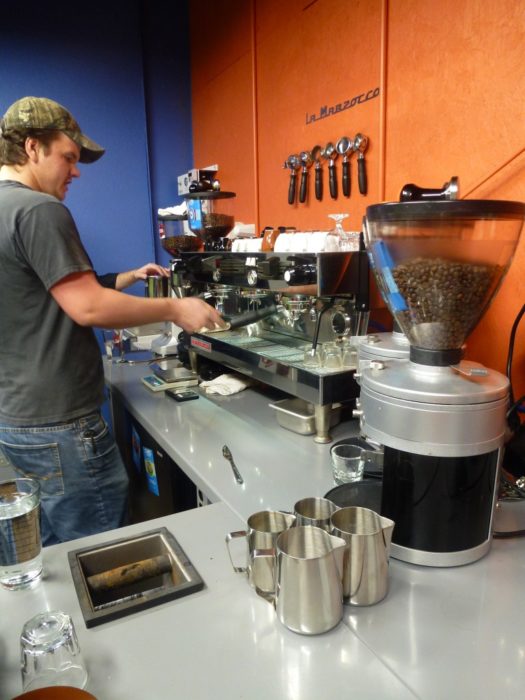
Mike started Cuvee after a job installing fiber optic cables, transforming his personal network away from digital geeks to roasting geeks. He and a friend started to experiment with coffee beans when they purchased a Samiac machine designed for professional roasters. They turned out large batches roasted beans, enough for them to supply their growing circle of fans. They moved from hobby roasters to professional roasters, following the growth of coffee culture from Seattle to Portland, from Starbucks to Stumptown, as they used the Agtron technology to roast predictably and often.

The company headquarters is in Spicewood and operates in a low-profile, unmarked building common in the world of low profile high technology companies. The tasting room has the feel of a Maseratishow room, but instead holds equipment from La Marzocco an Italian espresso machine manufacturer. Polished steel and glass brighten the room full of small cups, dark beans and tiny spoons perched aside single shot glasses.
Cuvee’s roasters inhabit a large warehouse, with the owner’s speedboat at one end and pallets of beans at the other. In the middle are whirring machines that consume bucket loads of green beans into their heated cavities, each with a small glass window that reveals the beans as they turn slowly from light green to varying shades of brown. Cuvee’s trademark blue bags pile up on shelves, each marked with labels intensely designed with the logo of a customer or images that connote a particular coffee region, location or personality of their own Cuvee culture. One bag, marked Spicewood, contains beans that are Cuvee’s houseblend, named after the company’s hometown. Another Fazenda Pantano is for the Brazilian family Ferrero that produces a chocolaty, nutty, smooth bean using a method called “honey processing,” which Cuvee says gives the beans a “clean” taste. Does this remind you of wine tasting terminology?
Cuvee sells mostly to independent coffee shops such as Caffé Medici and Once Over Coffee, but its blue bags also appear in grocery shops such as Whole Foods Markets and restaurants such as La Condesa and Barley Swine. You can bet that the Agtron will be put to the test as Mike reaches his revenue goal of $12 million in five years. Those robin’s egg blue bags may become an Austin symbol far outside the city limits.
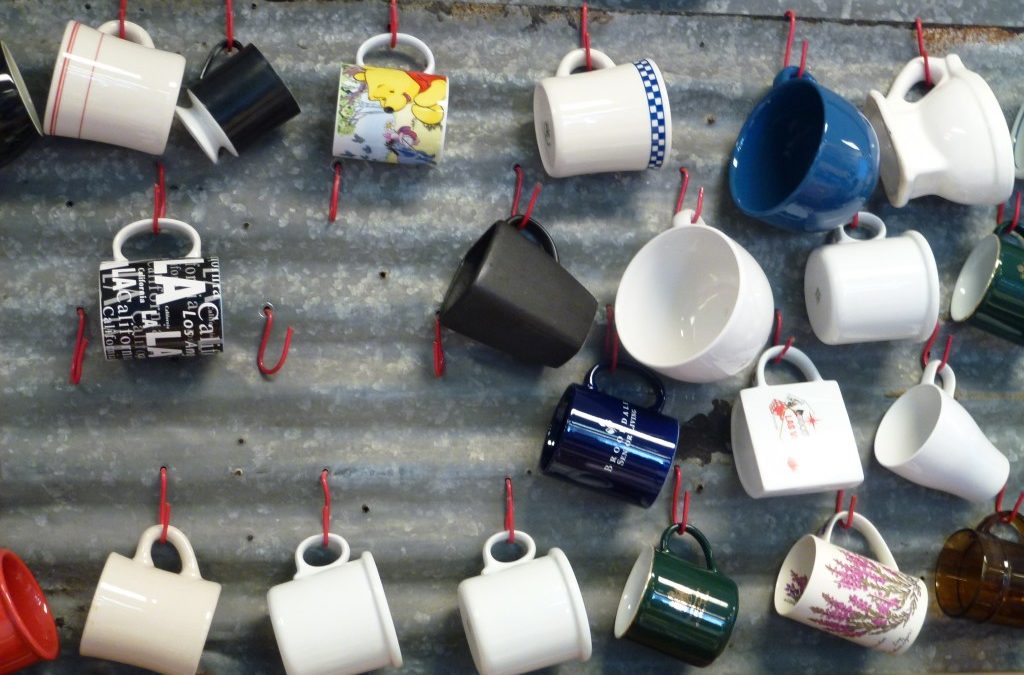
by Food+City | Feb 15, 2012 | Food Tracks Blog, Stories
Oliver Strand wrote in a recent New York Times article that coffee can be either something you make or something you drink. One coffee roaster in Austin, Texas believes coffee can be both. Roster Joe Lozano and Manager Clay Roper combine the nuances and artistry of making coffee with the palate and gustatory delight of drinking coffee. Telling the story of how they accomplish this is one of their favorite pastimes.
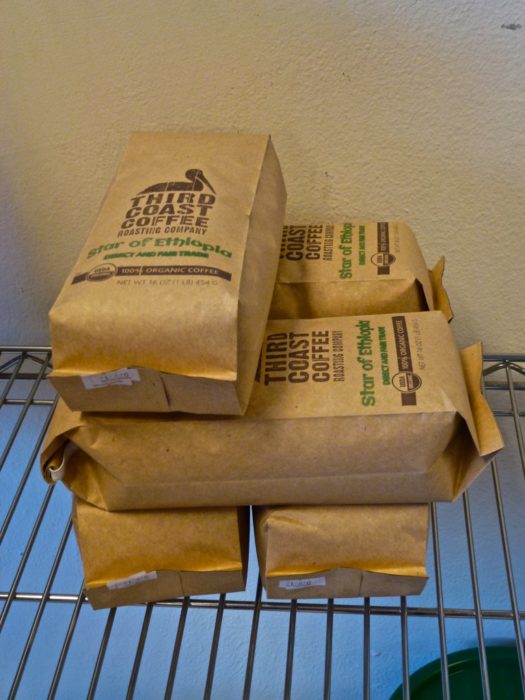
Third Coast Coffee Roasting Company occupies an unpretentious space in a small office complex outside of the bustle of downtown Austin. Although the company has a small coffee bar and a wall of coffee mugs to entice coffee drinkers, the place appears to be all about the making of coffee. Pallets of green coffee beans arrive from Cooperative Coffees, a collective of 24 roasters who purchase coffee according to Fair Trade relationships with their farming communities. Stacks of jute bags display the Cooperative Coffees logo and a description of the beans inside each bag. The five employees of the company take care to select, taste, re-taste, and taste again samples of beans that come from their growers. This process of tasting is called cupping by those in the trade and transforms Third Coast Roasting Company into a producer of something you drink rather than make. Clearly, Mr. Strand failed to imagine that some roasters could be occupied with both the making and drinking of coffee.
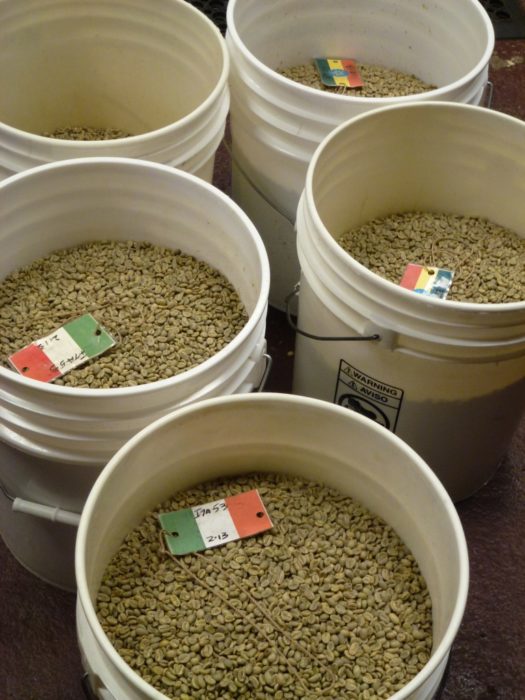
Once beyond the small coffee counter, a large floor-to-ceiling world map belies their main passion, the connection between the drinking and the producing of their coffee. Bright red pushpins mark each grower, most huddled in Central America, then down to South America, and a few sprinkled in Africa and Indonesia. And as if a colossal map weren’t enough to make their point, the roasters link their website to each of their growers through the use of Google Earth. Know Your Grower (You’ll need Google Earth to view this.) For these roasters, the urge to connect people to their coffee is irresistible and everywhere you turn you’ll find traces that lead from cup to country … and a little red pushpin.
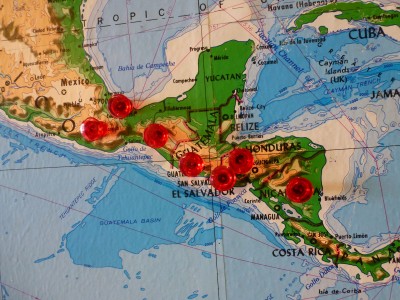
Linking drinking to making coffee, the roasters work several roasting machines in the back of their space. Plastic buckets of green beans marked with flags of their country of origin line up aside each roaster, waiting the approval of Joe, the master roaster, as he fiddles with his roasting “recipes” on his laptop computer perched aside the active roasting oven. Joe’s background in the food business shaped his approach to roasting. He thinks of beans as food, assessing his roasts according to a bean’s texture, greenness, and a multitude of other characteristics that coffee aficionados boast about during their cupping sessions. Self-taught and intensely engaged with his custom roasts, he says he appreciates the knowledge a roaster builds up and would like someday to spend more time with the growers, enabling more collaboration and education within the coffee bean community.
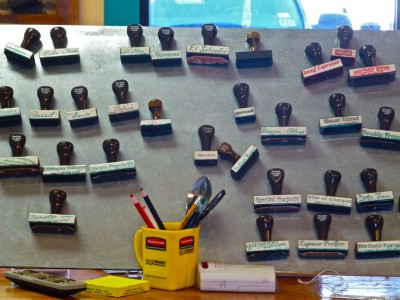
Admiring his completed lists of roasts on the day of my visit, Joe swung open the overhead door next to his ovens and stook in the sunshine that poured into his shop after three days of rain. His looked up, took in the fresh air, and returned to bagging the just-roasted beans for wholesale customers, restaurants and farmers markets. The combination of making and drinking coffee seems easy for these roasters.
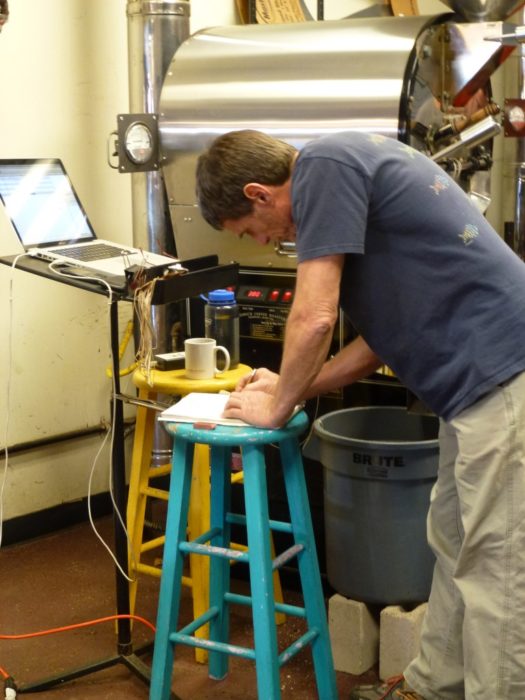
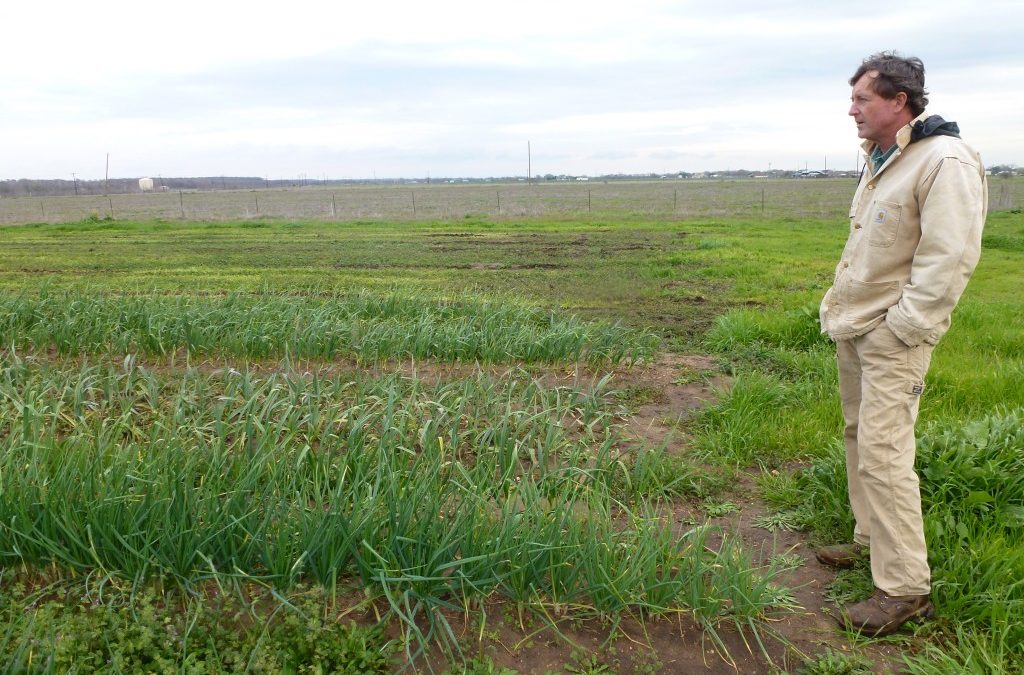
by Food+City | Feb 11, 2012 | Food Tracks Blog, Stories
If you want to find a happy man, look no further than David Pitre. His smile tells it all, the love and appreciation that he has for his work, the land, and even, yes, escarole. David and his wife Katie own Tecolote Farm, an organic farm located just outside Austin, Texas. Blue eyes sparkling as he describes their enterprise, David loves seeds, especially heirloom varieties that yield lettuce leaves brushed with burnt-umber that arrive on his farms with names like Marvel of Four Seasons. Lettuce and other vegetables grow at Tecolote Farm (named after the owls that live near their farm), the first farm to have offered a CSA in the Austin area in 1994.
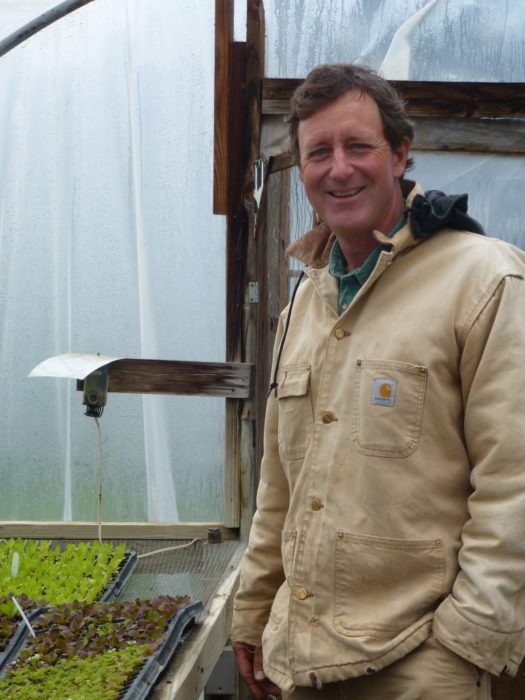
Why are David and Katie so happy? It couldn’t be the Texas drought, the fickle behavior of his favorite seed companies, or the economic downturn that shortened their list of CSA customers. But it might be their view that they make their own decisions about what to grow, their customers, and how they want to live. Working farmer’s hours, adapting to the challenges of weather and persnickety seeds, David and Katie exert their freedom to select and perfect the vegetable varieties for the Texas landscape while experimenting with seeds with odd names and unusual pedigrees. Over 150 vegetable varieties overcome the Texas drought to appear in Austin’s restaurants and on the tables of food lovers in Central Texas.
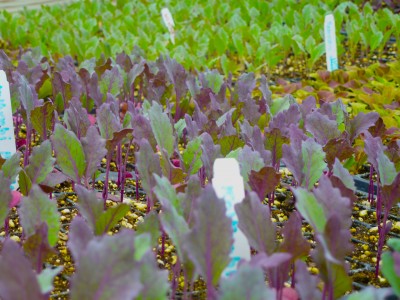
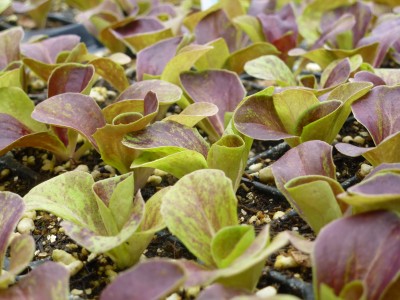
One area outside of this world of free choice is their chicken yard, Katie’s space where her own preferences are sure to prevail. Tecolote raises a flock of chickens that include Barred Rocks and a rotating list of chickens that suits Katie’s own tastes. David uses his background as an agronomy student during the 1980s to good use, growing oft-ignored crops like escarole, radicchio, chicory, and sorrel. Their CSA customers receive these and other more common vegetables in woven baskets every week, sometimes with recipes that use their Belgian endive or elephant garlic. You get the idea that Tecolote’s customers are more than just the paying kind; they are part of the farm’s urge to explore new ways of eating off the land in Texas.

David grew up in Mexico City with a father who was an artist; Katie comes from Orange County, California, and the two of them raise their three teenage children on the farm along with three canine members of their family. In between growing seasons, they raise cover crops to prepare their soil for the next crops. Using turkey litter and rice hulls, they keep their soil ready to receive the next round of seedlings that emerge from Tecolote’s greenhouse, small, displaying purples, greens, and surprising hues of blue and red. On the day that I visited Tecolote, we walked through the rain-soaked muddy road to a pasture that was filled with garlic and shallots.





















